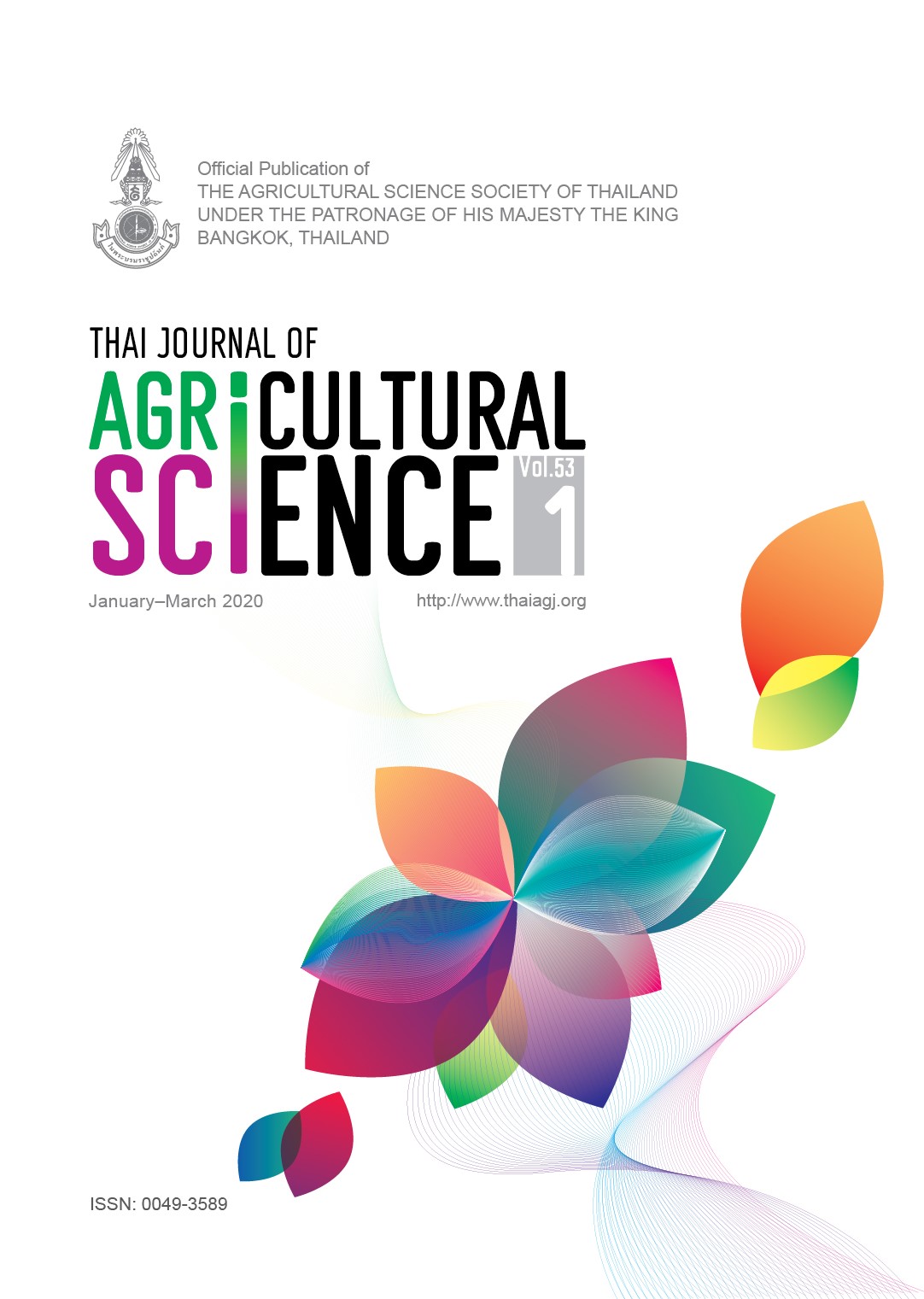Comparison of Fecal Quantity and Quality of Tilapia (Oreochromis niloticus), Walking Catfish (Clarias macrocephalus), Barb (Puntius gonionotus) and Climbing Perch (Anabas testudineus) Fed a Commercial Diet
Main Article Content
Abstract
This study aimed to quantify and qualify the feces of four fish species including tilapia (Oreochromis niloticus), walking catfish (Clarias acrocephalus), barb (Puntius gonionotus) and climbing perch (Anabas testudineus) to find suitable species for aquaponic system. Fishes were fed commercial diet containing 32% of crude protein four times a day for 60 days. After 60 days of feeding, the results showed that the body weight gain, specific growth rate, and final body weight of tilapia and catfish were significantly higher than those of climbing perch and barb (P < 0.05). The highest value of feed intake was significantly exhibited in catfish (P < 0.05); while, feed intake of climbing perch and tilapia was significantly better than that of barb (P < 0.05). The lowest value of feed conversion ratio (FCR) was significantly displyed in catfish and tilapia (P < 0.05); while, FCR of barb was significantly higher than others (P < 0.05). The fecal amount, expressed as % feed intake, showed that catfish and tilapia excreted the largest amount of feces compared to those of climbing perch and barb (P < 0.05). The nutrients namely nitrogen, phosphorus and potassium contents measured in feces were similar in all fish species. However, the nitrogen and phosphorus contents in the water effluent of catfish were significantly higher than others (P < 0.05), while potassium content in water of catfish, tilapia and climbing perch was significantly higher than that of barb (P < 0.05). Based on the results of the present study, catfish and tilapia are recommended to be suitable fish species for aquaponic system.

